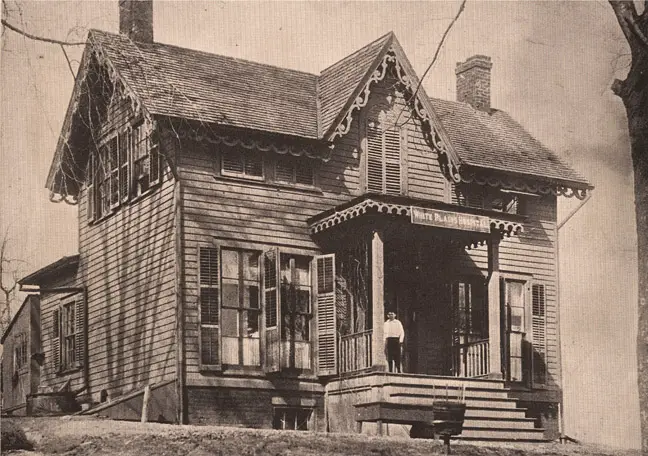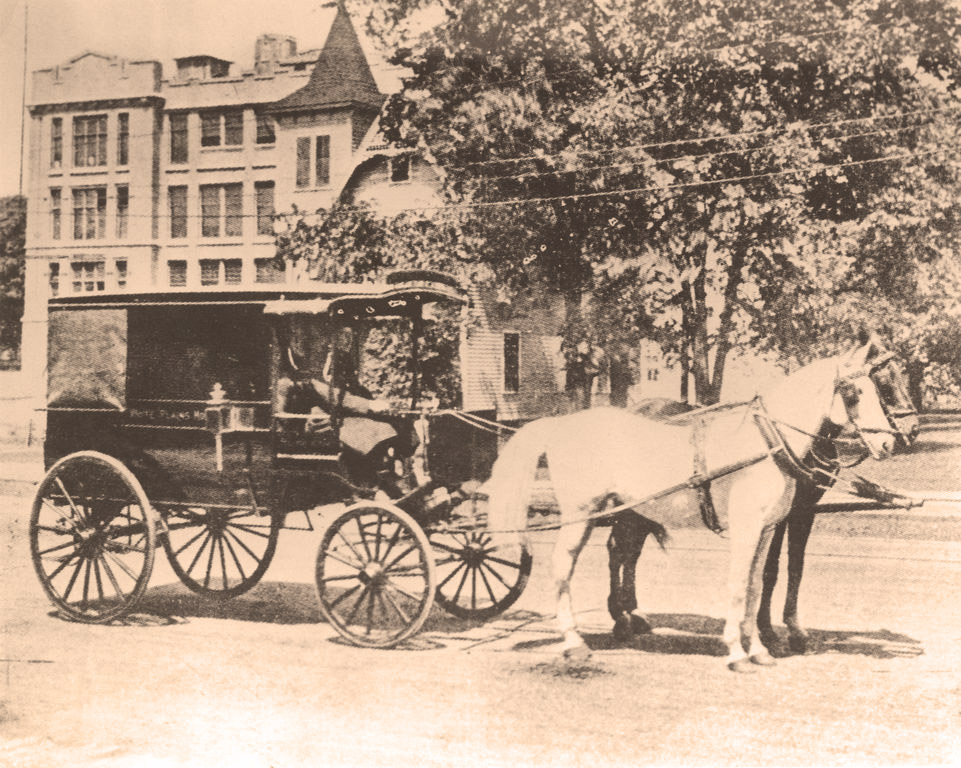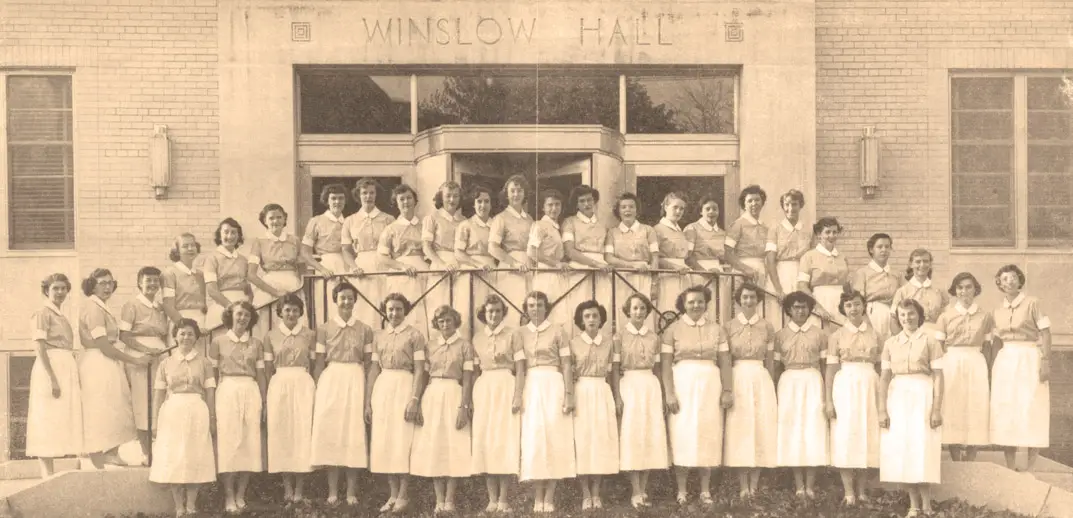[vsw id=”nL-f7xVP3hU” source=”youtube” width=”650″ height=”440″ autoplay=”no”]Just a few feet outside the first-floor office of White Plains Hospital CEO and President Susan Fox, there”™s an opening ripped in the wall. But there”™s no need for repairs just yet. The opening is part of the hospital”™s celebration of 125 years in business.

Staff recently took down a section of the finished wall to reveal a concrete cornerstone built into part of the former hospital building, marked 1939. It was dedicated as part of a hospital expansion at the time that was later built over for even newer hospital space.
There”™s believed to be a time capsule hidden behind that cornerstone. If it is indeed still there ”” there”™s a plan to search for it with X-rays ”” Fox said the hospital will dig it out and open it in a ceremony this spring.
It”™s a chance for some unique anniversary publicity, no doubt, but also a physical reminder of the way the hospital has constantly expanded its blueprint over more than a century while maintaining its downtown location on East Post Road.
“We”™ve been through everything from a four-room hospital to start to where we sit today,” Fox said. “As we renovate the hospital and as we expand, we see pieces of history.”
That four-room hospital opened on Chatterton Hill in 1893, from which it served 31 patients in its first year. The hospital moved to a slightly larger building on Lexington Avenue four years later before landing at East Post Road in 1907, the address it has called home since.
In that time, the city has grown around its downtown hospital. White Plains exploded from a rural village of fewer than 8,000 residents into the high-rise city of 58,000 that functions as the governing and business hub for a county of nearly 1 million people. Just under 200,000 patients are treated yearly by White Plains Hospital across a range of specialties and services, and those patients come from throughout the county and even outside of it.
Today”™s hospital is surely unrecognizable from the original 50-bed, red-brick hospital on East Post Road where patients once were dropped off by horse and buggy.

The last century brought a series of ribbon cuttings and groundbreakings. Those stretch from the construction of a new wing in 1924 that expanded the hospital from 50 beds to 100 to the opening of the Dickstein Cancer Center in 1991, the first freestanding cancer center between New York City and New Haven. They include the recent $100 million in upgrades to modernize the hospital”™s lobby and add private patient rooms and surgical suites.
In that time, the hospital opened the county”™s first cardiac center, first self-contained ambulatory center and first fully automated chemistry center.
Leigh Anne McMahon, senior vice president of patient care services, started as a nurse with White Plains Hospital 34 years ago. She was impressed then with the hospital”™s focus on small details in patient experience ”” even changing the art on the walls of patients who spend more than a couple days in a single room to keep things fresh.
She estimates there were about 150 nurses when she first started there. Now she oversees a staff of 800 nurses, covering a range of specialties.
The hospital has grown steadily in her time, but McMahon said it”™s accelerated in recent years. “Five years ago, if you asked me where we”™d be today, I don”™t think I could even imagine,” she said.
Much of that growth has been driven by the community, Fox said, including the fundraising efforts of the Friends of White Plains Hospital and other foundations.
Recent growth has also followed the hospital”™s partnership with Montefiore Health System, which was finalized in 2015. The affiliation has provided the hospital with additional funds and larger institutional backing at a time that Fox described as especially crucial to the hospital”™s future.

“Over the years there”™s been times of ”˜we”™re fine,”™ and then times where we need to accelerate in some ways,” she said. “And I think in the last 10 years we”™ve really needed to have a very focused plan to be successful in the future.”
That strategic planning has been driven in part by the passage of the Affordable Care Act. The health care overhaul changed the ways hospitals are compensated, focusing on measuring quality of care rather than volume of services provided. Health care institutions throughout the county and country have been forced to adjust.
Montefiore”™s focus on population health, White Plains Hospital board chairman Laurence Smith said, made it an ideal partner for this era of medicine. Population health is another term for health care focused on patient outcomes and coordination of care. Smith described Montefiore as a leader in developing that type of care system.
“The one thing we know with certainty is that health care expenses are too high in this country and outcomes are too low,” Smith said. “So when you think about how to fix that, we don”™t have all the answers, but certainly population management is a part of that.”
For White Plains Hospital, that means an increased presence throughout the county in ambulatory care facilities and a growing base of doctors that allows the hospital to serve as a regional hub for Montefiore. The hospital has grown to include 292 beds, but that”™s no longer the only measure of its footprint.

“A lot of what we do now is in many ways make sure people don”™t get sick, and don”™t have to come into the hospital,” Fox said.
The hospital celebrated a $60 million expansion of its cancer care center in 2016 and last fall cut the ribbon on a $17.5 million renovation of its clinical space, among other projects. More expansion is on the way, as Fox said the hospital expects to make a major facilities announcement later this year.
“We have been very proactive about what our future is and our future is to continue to build, just as in our past,” said Fox, who succeeded longtime White Plains Hospital CEO Jon. B. Schandler in the top executive post in 2015.
That continued growth comes as a number of major regional health care providers in addition to Montefiore have entered the Westchester County market through hospital partnerships and acquisitions. The NewYork-Presbyterian and Northwell Health systems have partnered with and invested substantially in several county hospitals, while two New York City specialty hospitals, Memorial Sloan Kettering Cancer Center and Hospital for Special Surgery, have built outpatient centers in White Plains Hospital”™s backyard.
Smith said that”™s no reason for worry. He cited the example of a gas station owner who has a competitor open a new station across the street. That has to be bad for business, right?
“In fact, it turns out to be good, because now everyone comes to that intersection for their gas,” Smith said. “One of the issues that has existed for a long time in Westchester County is that people in southern and central Westchester, if they have a knee replacement, they automatically go into the city. They have something serious on the cardiac front, they go into the city. The future of health care for Westchester patients lies in Westchester.”
Fox said she reminds staff to “keep our eyes” on White Plains Hospital”™s own operations rather than competitors”™. “We know what to do. We”™ve been here for 125 years doing it right,” she said.
That”™s part of what make the hospital”™s leadership positive for the future. There”™s a “buzz,” they say, over what lies ahead at the 125-year-old community hospital.
“The last five years, it”™s been just mind-boggling to see where this hospital has grown to,” McMahon said. “The services, the growth of facilities. I sit in this seat now and think, oh my gosh, where are we going to be in five years? It”™s exciting to know it”™s going to be even more mind-boggling.”


















